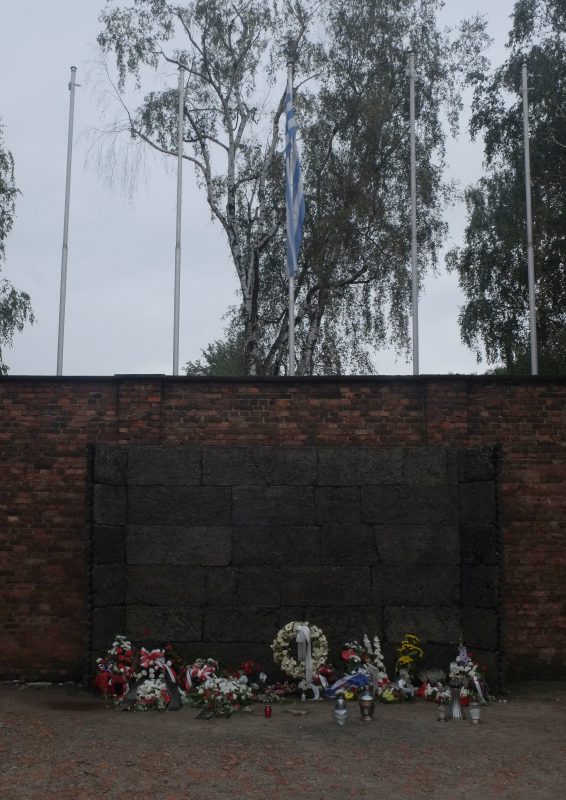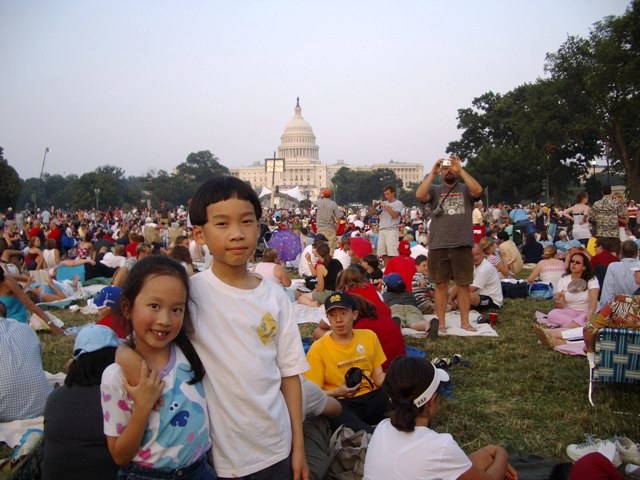A Poetic Mid-Autumn Festival

The Mid-Autumn Festival is the second most important traditional holiday in China, after the Lunar New Year. With the Lunar Year starting from the Spring Festival, the Mid-Autumn Festival is on a full moon either eight-and-a-half or nine-and-a-half moons later. In most cases, each “season” in Chinese lunar calendar contains three moons, and the Mid-Autumn Festival falls on the middle moon of the “autumn season”, hence the name. (Exceptions are made for “leap moons”, which are inserted into the lunar calendar so that it does not get ahead of the solar one too much.)
The Mid-Autumn Festival is to celebrate a good harvest. In this sense the Mid-Autumn Festival is similar to Thanksgiving in meaning. The connection between the Mid-Autumn Festival and Thanksgiving does not stop here, however. The Mid-Autumn Festival, just like Thanksgiving, is also traditionally a holiday for family gatherings. But wars and other difficulties in life may prevent one from going home and be united with one’s family. And, again traditionally, a cure for homesickness is poem-writing.
“Chinese Sonnets”
As you may well know, sonnet is probably the most popular “rigid” poetic form in western languages. By “rigid” I mean that a sonnet has very exacting requirements in the number of syllables per line (generally 10), in the requirements for the syllables in each line (a syllable in a word is categorized as either stressed or unstressed, and the position of a syllable in a poem determines whether a stressed or unstressed one should be used), in the number of lines per sonnet (always 14), and the rhyming scheme. Sonnets originated in the thirteenth century, and became super popular during the Renaissance.
Four forms of Chinese poems have striking resemblance to Sonnets: Seven-Lü, Seven-Jüe, Five-Lü, Five-Jüe. (The ü is pronounced like the same character in German, as in Düsseldorf.) The “Seven” or “Five” part indicates the number of characters per line (the Chinese language is strictly one syllable per character), while the “Lü (律)” and “Jüe (绝)” part designates the number of lines the poem contains, which are eight and four, respectively. So already, we can see that just like sonnets, each of these Chinese poetic forms contains the same number of syllables per line, and an exact number of lines per poem. There are also particular requirements on the tone-types of characters used, (Ping-Ze (平仄), or level- vs. oblique-tones) depending on the position of each character within the poem, which is almost an exact counterpart to the stressed-unstressed syllable designations in the meters of English poems. Overall, the parallel to sonnets is uncanny.
“Thought on a Quiet Night”
The first poem we are going to look at is a Five-Jüe by Li Bai (701-762 CE; aka Li Pai or Li Po). This poem is not written about the Mid-Autumn Festival, but due to its content it is often recited during this time. I’ll first share the original text, its phonetic representation in Pinyin, and a gloss, or word-to-word translation. A proper translation will be presented later.
静夜思 Quiet night thought
李白 Li Bai
| 床 chuang bed | 前qian front | 明ming bright | 月yue moon | 光, guang light |
| 疑 yi suspect | 是 shi be | 地 di ground | 上 shang on/upon | 霜。 shuang frost |
| 举 ju raise | 头 tou head | 望 wang look | 明 ming bright | 月, yue moon |
| 低 di lower | 头 tou head | 思 si think | 故 gu former | 乡。 xiang village |
We can already appraise a couple of facts about the Chinese language from the above. One is that the text is rather succinct. Each of the characters is expressive of meaning. In other words, each single character corresponds to an English word with one or more syllables. Secondly, we can observe the frequent omission of parts of a sentence that is mandatory in English—for example, the subject of the last two lines, “I”, is omitted. This is not just a poetic expression, but is practiced in prose as well. (BTW, this is also common in Japanese and Korean.) In the wonderful book “Lost in Translation: A Life in a New Language”, Eva Hoffman commented that when working in the United Nations, where each document was archived in five languages, and arranged next to each other, she could point out to the librarian the Chinese version from afar, judging simply by the thinness of the volume.
We can glean something from the Pinyin, the phonetic representation below the Han characters: the rhyming scheme. It is common in Chinese poems that a single rhyme is carried throughout a whole poem, as the case here. The common rhyming scheme of all of the aforementioned “Chinese sonnets” is to rhyme on the first line, as well as all even-numbered lines.
Now I’ll present my translation, followed by some explanations.
Thought on a Quiet Night
LI Bai
My bedside’s moonshine’s bright,
Is it a frost so white?
Head up the moon greets me,
Head down a homesick night.
In this translation I used iambic trimeter to approximate the five-syllable original. In iambic meter each foot has two syllables, unstressed-stressed. While other meters could be used, I felt that the iambic trimeter (with three feet per line) allowed just enough number of syllables to express the full meaning of the original poem, without requiring additional filler words. In other words, I’m using 24 syllables in English to translate a poem in Chinese with 20 characters. I also adopted the original’s rhyming scheme, with rhymes on the first, second, and last lines, instead of using a rhyming scheme of the English/Italian tradition.
When reading the poem, one is struck by the simplicity of the words and the directness of the expression of feelings. The author observed the moonlight at night, at his bedside, which imparts the feelings of cool temperature, low light, faded colors, all of which lead to a dampened mental state in the reader. And the mention of bedside implies a sense loneliness—the author was either awakened by the moonlight, or had difficulty sleeping.
The expressive homesickness sentiment is what made this poem often being recited during the Mid-Autumn Festival. As I mentioned earlier, the Mid-Autumn Festival is a particular occasion for family reunions. And traditionally that would mean returning to one’s home village, where one’s elders and clan reside. Confucious famously said: “One does not travel far when their parents are still living, unless good arrangements are made.” We do not know the exact year this poem was written, and consequently we can’t tell what was keeping the author away from home. But the poem gives us the feeling that his heart was very much aching for his home village, and his kinsfolks living there. And it’s precisely that feeling of wanting to go back home but not being able to do so, that made this poem one of the most well-known in Chinese traditional literature.
“How Frequent’s Full Moon”
The types of poems that we previously referred to as “Chinese Sonnets” (called “Shi (诗)” in Chinese) peaked in popularity during the Tang dynasty (618–907 CE). After some years of turmoil, the next relatively stable dynasty, the Song dynasty, (960–1279 CE) was established. During this period a different poetic form flourished. This is the forms of “Ci (词)”, also called the long-short sentence verses.
You may get the feeling that “long-short sentence verses” is free-form, and that would be very far from the truth. Each of the Ci form of poems is actually the lyrics written to fit a particular song, and the songs are often romantic in nature—romantic in the original sense, where intense emotions of any kind are expressed. And just like the Romantic period musicians, the song writers figured out that romantic songs should not have even-length sentences. After all, when one is emotionally agitated, one is naturally not able to keep sentences on an even keel.
I often imagined that in ancient Chinese history the art of melody writing was not appreciated as much as that of lyrics writing, and was delegated to nameless craftsmen. One consequence is that the melodies of this period were all lost, but many of the lyrics were passed down as poems and appreciated by students of all times. (There is a parallel of sorts in western languages. It was once thought that a good libretto for opera is hard to come by, and consequently Pietro Metastasio’s libretto Adriano in Siria was set to music at least 65 times!)
Like Schubert’s lieder, the songs behind the Ci must have been syllabic, containing no melisma or splitting one note between two syllables. Thus, the melody dictated the Ci poem’s sentence structure and meter (the rhyme characters and the choice of level- vs. oblique-toned characters). And because the lyrics were written to fit a pre-existing song, each Ci poem comes with a two-part title: one for the song, one for the poem itself.
Armed with these background info, let’s now examine the poem itself. This being a longer verse, I’ll skip the pinyin and only provide the gloss (the word-to-word translations) after the original text.
水调歌头·明月几时有
Shui Diao Ge Tou[1]: Bright Moon What Time Has
苏轼 (1037-1101)
SU Shi
明月几时有?把酒对青天。
Bright moon what time has? Take wine toward blue sky.
不知天上宫阙,今夕是何年?
Not know heaven above palace, this evening is what year?
我欲乘风归去,又恐琼楼玉宇,高处不胜寒。
I would ride wind go back, but afraid jade building jade world, high places be cold.
起舞弄清影,何似在人间。
Up dance with light shadow, what like in human space.
转朱阁,低倚户,照无眠。
Turn red building, low against house, shine no sleep.
不应有恨,何事长向别时圆?
No should have hate, what matter long toward leave time round?
人有悲欢离合,月有阴晴圆缺,此事古难全。
People have sad happy part gather, moon has cloudy bright wax wane, this thing history hard complete.
但愿人长久,千里共婵娟[2]。
Only wish people long live, thousand mile share Chanjuan.
Notes:
- [1] Shui Diao Ge Tou: the name of the song that this Ci arrangement is to fit. The exact words have lost their meaning, and therefore I am only showing their Pinyin here.
- [2] Chanjuan: the name of a beautiful woman, whose was the student of a scholar. Here it is used to represent the moon, which is female in nature in Chinese culture. In Chinese literature and poems, “quoting” earlier works in some way was a very popular, sometimes required, element.
- [3] The way I did the line breaks is uncommon, but helped to illustrate the rhyming scheme: the last character on each line rhymes, and the piece is on the same rhyme throughout.
Here is my translation:
Shui Diao Ge Tou: How Frequent’s Full Moon
SU Shi
How frequent’s full moon, I want to be told. Which year is it now? You keep time a-flow. Up there is where I belong, yet I know, High as where you are, it’s got to be cold. So stay I must, dancing with my shadow. Sleepless, I watch you come through my window. How can you be full when we are apart? You wax and wane, just as we gather and part, Nature’s laws we obey, both me and you. Sharing you from afar, they’re on my heart.
As I mentioned, a Ci follows strict rules for rhyme and meter. So that explains my choosing the iambic pentameter form. But unlike Shi, Ci has a more varied sentence structure by design. This informed my choices of using five lines per verse, which is uncommon in iambic pentameter poems, and using interlocked rhymes, which is common.
In the original the author uses the character 人 to represent the target of his longing. Through historical record we know that he was thinking of his brother when the poem was written. But 人 is a unisex word for person or people, and it is this meaning readers generally take up, to resonate upon their own thoughts of their loved ones, regardless of gender. In the translation I intentionally used the gender-neutral pronouns “we” and “they” for the same effect.
The Chinese language being much more succinct than English, and my choices of form means that I am using 100 English syllables to translate a Chinese poem containing almost 100 characters, there are many ideas and images in the original I had to omit. Cutting out the translation of Chanjuan is almost inevitable, there being no easy way to evoke the same sentiments. Leaving out the “jade world” is a much harder choice, as I’m not sure if a reader not informed of Chinese language or culture can or cannot see the moonscape as a jade world. There are many words in the original poem that illustrated the lunar world as a cold place lacking bright colors, and the “jade world” description is but one of them. Regrettably I left all of these out.
But the main idea that resonated with people throughout history is that the moon is a connection between people displaced from each other. And in that sense my translation was not amiss. I hope you’d agree.
The two poems I presented here are so famous that all kids who went through elementary and secondary schools in China would be able to recite them. And poems are such an integral part of Chinese culture that possibly all educated people have written some, at least in the Shi form. Some people take the forms loosely, for example by ignoring the specifications of Ping-Ze, the unstressed-vs-stressed characters. Others take them strictly and historically, choosing rhyming words as poets of a thousand years ago would, while ignoring the pronunciation changes that have happened since then. Of course there are now also free-form poems, with or without rhymes. These the Chinese learned from the western cultures, in the last hundred years or so.
Have you written any poems lately? Or in the long past? Please share in the comments below. Your comments are welcome too, of course!
May you have a wonderful and poetic Mid-Autumn Festival, which falls on today, September 17, in 2024.
[Cover image partly generated using AI.]
A Poetic Mid-Autumn Festival Read More »
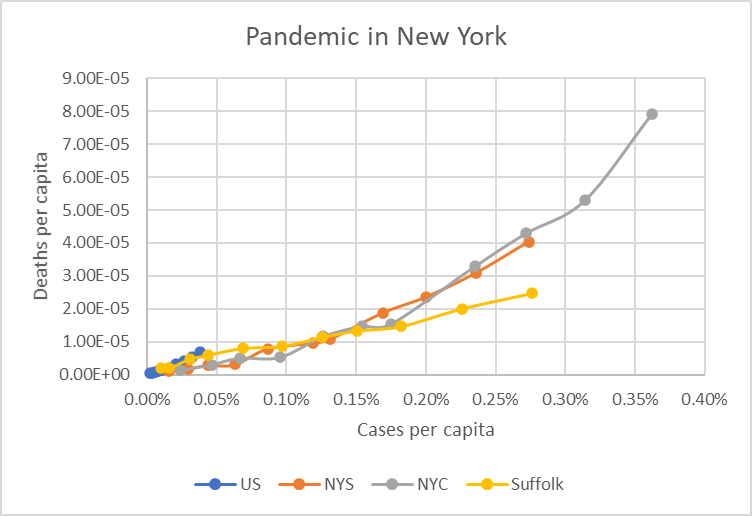
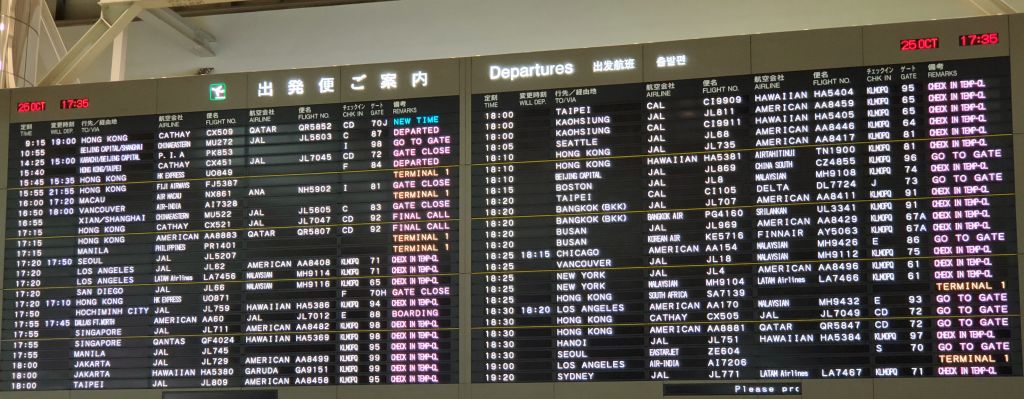
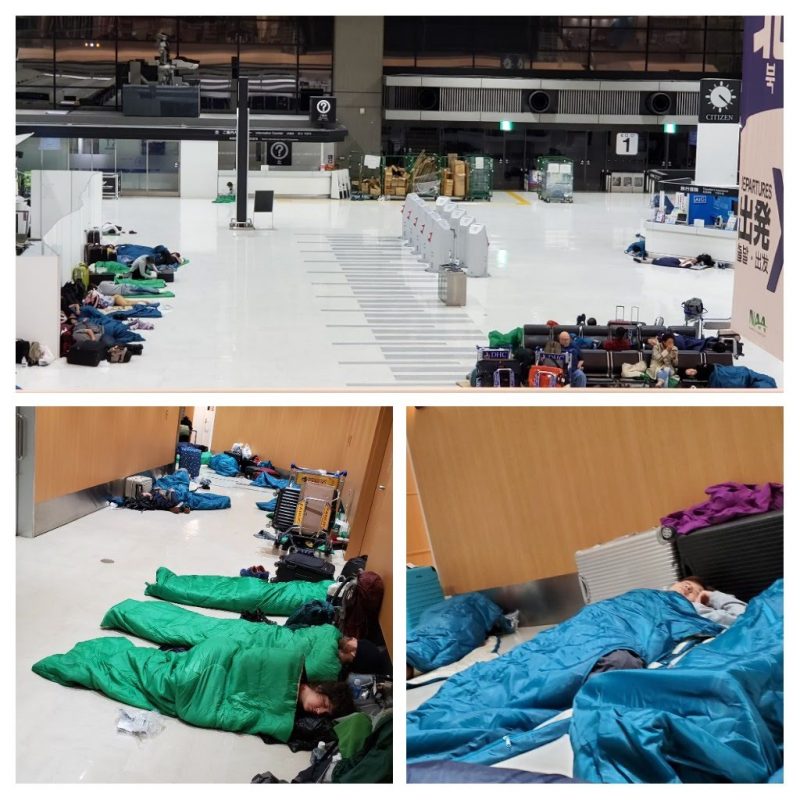



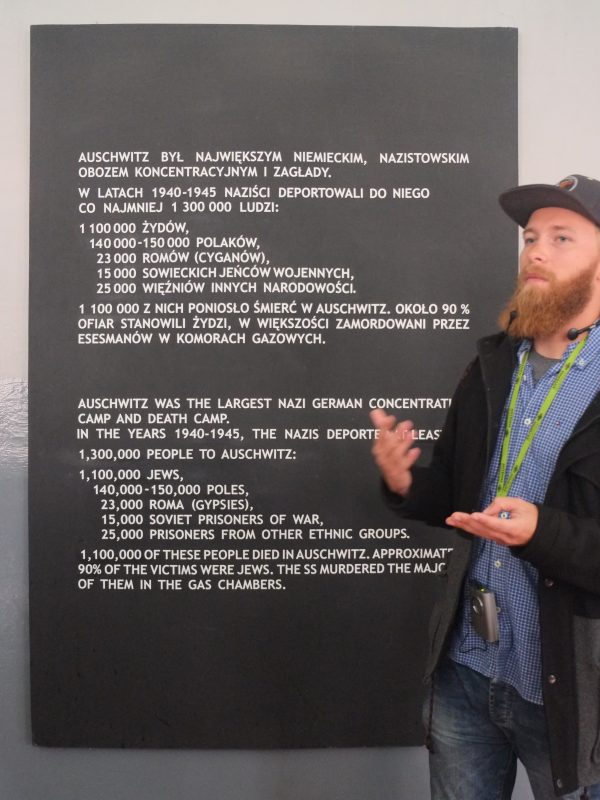 When we arrived at Auschwitz, we met the other people of our guided tour. They came from the UK, probably as a part of a multi-day tour—in contrast, the few of us who came with Conrad only booked this day-trip from Krakow. Now we had a group of about 30 in total. Fortunately for the Auschwitz I part, which is run as a museum, we each got a radio receiver which could be dialed into Conrad’s channel, and as such we could hear him clearly without having to be close to him, or for him to raise his voice in order to be heard. This is a good thing. His voice was subdued, due to the solemn nature of the topic, and the place, even with hundreds of people, was quite silent. This is where tens of thousands of people died.
When we arrived at Auschwitz, we met the other people of our guided tour. They came from the UK, probably as a part of a multi-day tour—in contrast, the few of us who came with Conrad only booked this day-trip from Krakow. Now we had a group of about 30 in total. Fortunately for the Auschwitz I part, which is run as a museum, we each got a radio receiver which could be dialed into Conrad’s channel, and as such we could hear him clearly without having to be close to him, or for him to raise his voice in order to be heard. This is a good thing. His voice was subdued, due to the solemn nature of the topic, and the place, even with hundreds of people, was quite silent. This is where tens of thousands of people died.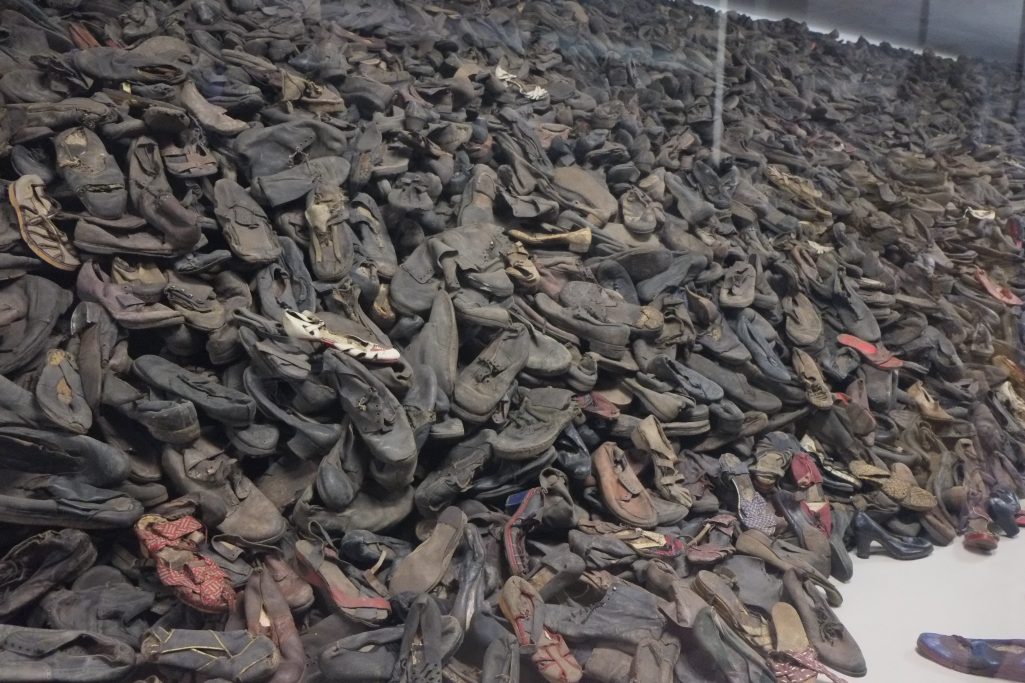 The museum tour at Auschwitz took about an hour and a half. After a quick break, we rode the vans to Auschwitz II/Birkenau. We could use the time to grab a bite, but Conrad apparently didn’t eat anything, and I decided to abstain as well.
The museum tour at Auschwitz took about an hour and a half. After a quick break, we rode the vans to Auschwitz II/Birkenau. We could use the time to grab a bite, but Conrad apparently didn’t eat anything, and I decided to abstain as well.